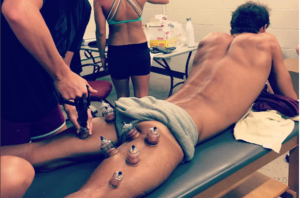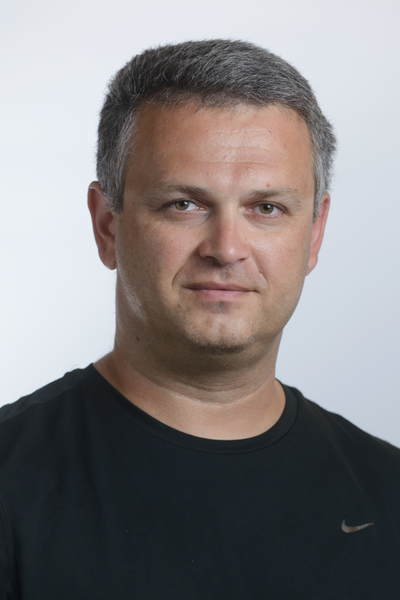
The Science Behind Cupping Therapy
August 17, 2016
JTA — If you’ve been watching the Rio Olympics, you probably noticed some athletes, including swimming superstar Michael Phelps, sporting strange purple circles on their skin.
JTA Editor Andrew Silow-Carroll writes about his surprise to learn that this Yiddish folk remedy, which is apparently an ancient Chinese practice, is being widely used by athletes to help loosen and stimulate muscles.
He recalls a Yiddish phrase he learned from his father: Es vet helfn vi a toytn bankes (עס וועט העלפן ווי א טויטן באנקעס), which means “It will help like cupping a corpse.” Essentially, the Yiddish phrase is an expression of futility: “Whatever you think you are doing to help will work like giving medicine to a dead body.”

This image from Instagram shows Michael Phelps receiving “cupping therapy,” “bankes” in Yiddish, to relieve and heal stressed muscles.
“Bankes” (rhymes with “swan kiss”) is a folk remedy involving little glass cups that are heated and then applied to the skin, forming a vacuum that healers believed would suck out bad spirits, malevolent humors and whatever else made people ill in the pre-antibiotics era.
This ancient practice called “cupping” gets the stamp of approval from some of the world’s top athletes. But, does it really work?
Dr. Leonid Kalichman, a physical therapy expert and senior lecturer at BGU’s Leon and Mathilde Recanati School for Community Health Professions, suggests that the treatment could work by stimulating the immune system to produce helpful proteins.
He does not, however, rule out the placebo effect.
“A placebo effect is present in all treatments, and I am sure that it is substantial in the case of cupping as well,” says Dr. Kalichman.
“A patient can feel the treatment and has marks after it, and this can contribute to a placebo effect.”




